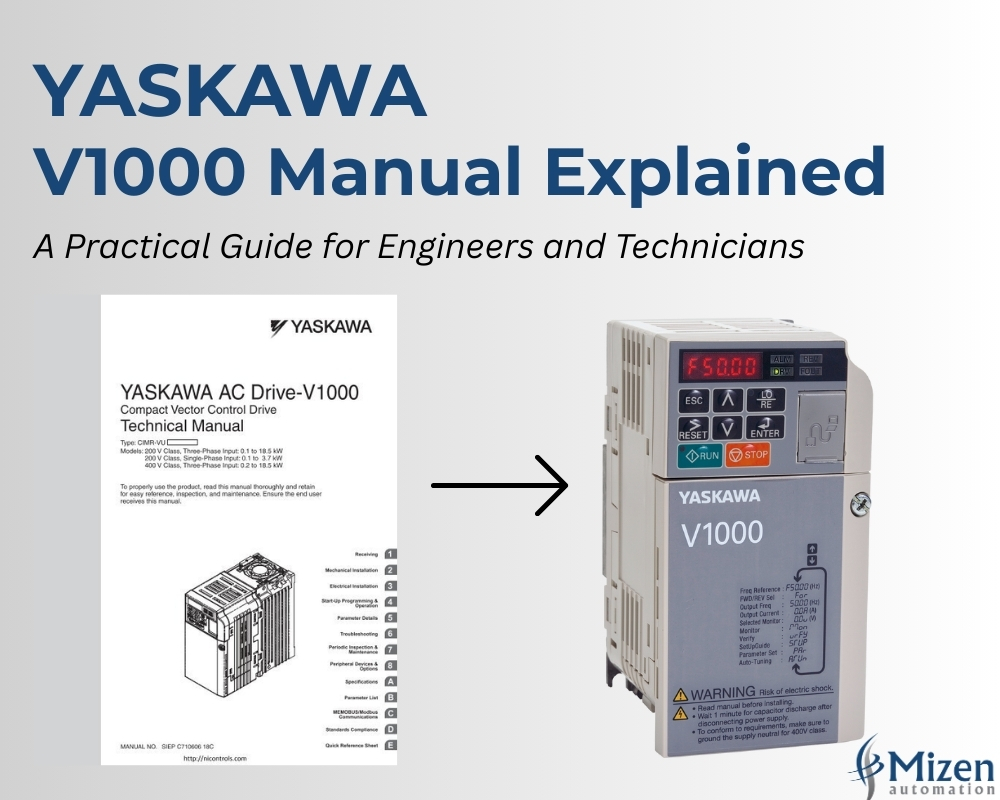No items

What is SCADA? A Simple Guide to Supervisory Control and Data Acquisition
Ever wondered how water treatment plants keep their operations running 24/7? Or how one operator can monitor hundreds of pumps

If you’re looking to buy a PLC controller, you’re likely upgrading a system, replacing a faulty unit, or launching a new automation project.
But with so many brands, features, and options out there, how do you choose the right one?
This guide walks you through five essential steps to help you select the right PLC for your needs—without wasting time or overspending.
At Mizen Automation, we work with engineers and purchasing managers across New Zealand to source the right parts fast. Here’s what you need to know before making a purchase.
A Programmable Logic Controller (PLC) is a specialised industrial computer used to control machinery and processes. It receives input from sensors, makes logic-based decisions, and sends commands to outputs like motors, valves, or relays.
PLCs are designed to handle harsh industrial environments, making them reliable for automation tasks across manufacturing, utilities, and logistics.
Choosing the right PLC saves time, reduces downtime, and ensures your system performs as expected. A mismatch—whether in I/O capacity, communication protocols, or programming compatibility—can cause integration issues and increase long-term costs.
Start by understanding exactly what your PLC will need to do.
Determine how many input and output points are required and what types they are—digital or analogue. Think about the complexity of your process. Will it need basic control or more advanced functions like PID loops, counters, or data logging?
Also consider cycle time. Some applications, like high-speed packaging lines, need fast scan rates. Others, like temperature monitoring, are less demanding.
Where the PLC will operate affects the model you should choose.
Will it be exposed to moisture, dust, vibration, or temperature extremes? Will it be mounted in an enclosed cabinet or on the production floor?
For tough environments, look for ruggedised PLCs or models with higher IP ratings. If the PLC is going into a clean and temperature-controlled cabinet, standard models may be fine.
Think about how the PLC will fit into your wider control system.
What programming languages do your technicians use—Ladder Logic, Function Block, Structured Text? Does the PLC need to connect to a SCADA system or talk to other equipment using protocols like Modbus, Profinet, or Ethernet/IP?
Also consider whether you need features like data logging, remote access, or the ability to expand later.
Support matters too. A manufacturer with solid documentation, training resources, and local tech support can save hours during setup and troubleshooting.
If you’re new to PLC programming, PLC Academy’s beginner guide is a great resource to understand the basics and what features might matter most to your application.
If you’re comparing leading brands, check out our related blog post:
👉 Schneider, Siemens & Allen-Bradley: Which OEM is Better?
Cost is always a factor, but the cheapest option isn’t always the best value.
Think beyond the initial price. Some PLCs require extra licences, programming cables, or software. Others might limit future upgrades, forcing a full replacement later on.
Match the cost to your needs—if you’re automating a basic pump station, you don’t need a high-end modular system. But if you’re managing a complex line with future expansion in mind, investing in a scalable system will pay off.
Once you know your requirements, it’s time to narrow down the options.
Look at the models available from trusted brands. Compare specs, features, and availability. Make sure the model you choose is compatible with your existing systems and won’t be discontinued anytime soon.
This is where working with an experienced supplier can help. At Mizen Automation, we stock and source:
We supply parts from leading OEMs like Siemens, Allen-Bradley, Schneider Electric, Omron, and more.
When you’re ready to buy a PLC controller, Mizen Automation makes it simple.
We support buyers across NZ with:
Need help choosing a PLC?
👉 Contact our team today for expert support and fast quotes.
Buying the right PLC doesn’t have to be complicated. Follow these five steps:
With the right controller in place, your system will run reliably and efficiently—today and well into the future.
Ready to find your ideal PLC?
Talk to Mizen Automation—we’re here to help.

Ever wondered how water treatment plants keep their operations running 24/7? Or how one operator can monitor hundreds of pumps

The Yaskawa V1000 is one of the most commonly used compact AC drives in the world. It is known for

If you have any questions get in contact with us via our enquiry form or call us on +64 (0) 3 964 0692.
"*" indicates required fields